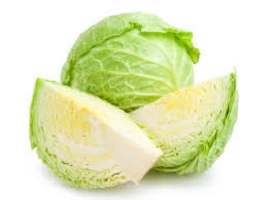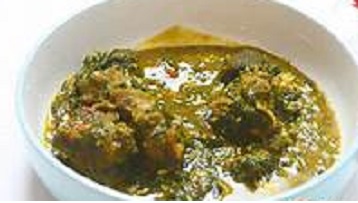Cabbage Benefits for Skin, Stomach, Hair, Weight Loss
Cabbage Benefits for Skin, Stomach, Hair, Weight Loss & Side Effects

The name Cabbage is a member of the cruciferous vegetable family and is frequently thrown in with lettuce due to its similar appearance.
Cruciferous vegetables like cabbage, kale, and broccoli are known for their high nutritional value. Cruciferous veggies are a wonderful place to start if you’re looking to enhance your diet.
Related >>>>>
- Cabbage Juice – Health Benefits, Side Effects & Recipe
- Cabbage vs Lettuce: Which is More Nutritious
- Old Fashioned Cabbage Vegetable Beef Soup Recipe
Table of Contents
Cabbage Benefits for Skin
Cabbage is one of the most widely available veggies on the earth. From coleslaws to sauerkraut to kimchi to rolls, you’ll find delectable recipes from all around the world.
But did you know it can also provide a significant amount of health benefits? Cabbage is high in antioxidants, which can aid with cognitive function, digestion, and skin and heart disease prevention. It’s also a good low-calorie option.
What Is Cabbage? Cabbage Benefits for Skin
Cabbage is an annual, leafy green, red, or white biennial vegetable. This cruciferous vegetable is round or oval in shape and belongs to the Brassica family.
It has soft, light green, or whitish interior leaves that are surrounded by tougher, dark green outer leaves.
It is classified as a cole crop, which implies it is related to broccoli, cauliflower, and Brussels sprouts.
It’s popular all around the world and can be made in a variety of ways. It’s most typically used as a cooked or raw ingredient in numerous salads.
Cabbage Varieties ~ Cabbage Benefits for Skin
There are roughly seven types, which include the following:
- Red cabbage
- Choy sum
- Bok choy
- Savoy cabbage
- Napa cabbage
- Cannonball cabbage
Nutritional Values of Cabbage ~ Cabbage Benefits for Skin
Cabbage is a good source of dietary fiber, calcium, magnesium, and potassium, among other nutrients.
It may also contain vitamins such as vitamin C, thiamine, niacin, and folate, according to the USDA.
Antioxidants such as flavonoids, zeaxanthin, lutein, choline, and beta-carotene may also be abundant.
Cabbage Has a Lot of Calories
According to the USDA, 100 g of raw cabbage contains approximately 25 calories, making it a popular low-calorie option.
Cooking the vegetable reduces the number of calories it contains slightly. The cooked veggie may contain roughly 23 calories per 100 g.
Health Benefits of Cabbage ~ Cabbage Benefits for Skin
Did you know that cabbage, a common and inexpensive vegetable, may have a variety of health benefits? Let’s take a look at some of the best ones!
- Antioxidant Agent
- Anti-inflammatory Agent
- May Support the Digestive Tract
- Might Improve Heart Health
- Skin Care & Vitamin C
- Weight Loss
- Prevents Cataract
- Supports Brain Health
- Improves Bones
- Regulates Blood Pressure
- Reduces Muscle Aches
- Speeds-up Healing
Cabbage juice benefits for skin ~ Cabbage juice has skin advantages ~ Cabbage Benefits for Skin
The juice has been shown to improve skin health. According to DK Publishing House’s book ‘Healing Foods,’ includes “Antioxidants vitamin C and K protect skin from free radical damage.
Its sulfur content may aid in the treatment of acne and eczema.”
Why does cabbage juice heal ulcers?
Cabbage Juice
Cabbage is a well-known natural ulcer treatment. Doctors apparently used it to treat stomach ulcers decades before antibiotics were available.
Vitamin C, an antioxidant that has been demonstrated to help prevent and treat H. pylori infections, is abundant in this fruit.
Should I drink cabbage juice on an empty stomach first thing in the morning?
Because of its high vitamin content and numerous health benefits, raw cabbage juice is the best thing that can happen to your body.
This juice is best consumed on an empty stomach since it quickly absorbs all of the essential nutrients.
How to Make a Healthy Cabbage Juice to Heal Your Stomach ~ Cabbage Benefits for Skin
Recipe for Cabbage Juice ~ Cabbage Juice Recipe
Ingredients
- A medium-sized cabbage
- Water
How To Choose the Best Cabbage?
You’ll get enough juice from a medium cabbage to fill two 1-liter jars.
Method
- Firstly, get the Cabbage Ready
- Then, bring the water to a boil.
- After that, in a blender, combine the chopped cabbage and water.
- Then, blend on a low setting.
- Blend for 10 seconds at maximum speed.
- Fill your jars with the mixture.
- Seal the jars
- Allow Jars to Cool to Room Temperature – Now comes the waiting. Keep your jars in a cool location.
- The ideal temperature is a little around 20 degrees Celsius. Make sure it isn’t too cold, but also not too hot.
- The fermentation of cabbage juice takes three days and yields the greatest results.
- The juice is cultivating cultures that will help your stomach battle ulcers, gastritis, and other ailments throughout this time.
- Strain the liquid into other jars using the mesh strainer.
- Put the lids on the jars
- Refrigerate the juice and then, wait for your testimonials.
Store the juice in the refrigerator and serve it cold.
Cabbage water nutrition ~ Cabbage juice nutrients includes Vitamin C. Vitamin A. Calcium.
A ½ cup serving of cabbage juice has:
- 22 calories per 12-cup portion of cabbage juice
- There are no fat or cholesterol grams in this product.
- 5 g of carbohydrates and 3 g of sugars
How does cabbage water help you lose weight? How do you lose weight with cabbage water?
Firstly, take the cabbage and finely cut it. Other vegetables or fruits, like ginger and apple, could be added to make it even more effective and pleasant.
After that, boil the pieces for roughly four to five minutes in water. Then, take the boiling pieces and puree them.
- What is the purpose of boiling cabbage?
It Is Rich in Nutrients
Half a cup of boiled cabbage provides roughly a third of the daily vitamin C requirement. It also contains fiber, folate, potassium, magnesium, vitamins A and K, and other nutrients.
Cabbage juice has numerous health advantages ~ Cabbage Benefits for Skin
- Prevents Ulcers
Powerful Antioxidant
- Helps with weight loss and digestion; maintains a healthy heart; lowers blood pressure
How to Use Cabbage? Cabbage Benefits for Skin
- Steamed, sauteed, fried, juiced, uncooked, and fermented cabbage may be found in almost every avatar in the world.
- Salads and coleslaws benefit from the crispiness of uncooked cabbage. It’s used in soups, stews, and stir-fries when cooked.
- The fermented version, which includes kimchi and sauerkraut, is both nutritious and flavorful.
- It has yet another odd and intriguing potential. Breastfeeding mothers have traditionally relied on chilled cabbage leaves to ease engorgement and pain in their breasts.
We’ve gotten mixed outcomes from our research.
While some studies were inconclusive, others discovered that the leaves could help with breast engorgement and breastfeeding length
5 Reasons to Enjoy Cabbage
This year, I’m going to plant a couple of cabbages because:
- Cabbage has numerous health benefits that should not be overlooked! Many of the health benefits of cauliflower are comparable to those of broccoli (they belong to the same plant family).
- It is inexpensive and abundantly accessible all year.
- Cabbage keeps in the fridge longer than most veggies.
In the refrigerator, cabbage can last anywhere from 3 weeks to 2 months if stored properly.
- Cabbage can help you lose weight and have gorgeous skin! Cabbage has numerous other advantages. Definitely remember to include this unsung superstar on your grocery list!
Where Can I Get Cabbage? How To Buy Cabbage
Always search for cabbage heads that feel weighty for their size in the supermarket store.
Side effects ~ Cabbage Benefits for Skin
Cabbage may potentially have several negative impacts on your body, including:
- Foods high in sulfur, such as cabbage, can produce bloating and flatulence.
- There is some evidence that its consumption by a breastfeeding mother may cause colic in her child.
- Cabbage may cause allergic reactions in some people. It’s advisable to be cautious if you’ve had an allergic reaction to a vegetable in the Brassicaceae/Cruciferae family, such as broccoli.
- People who have hypothyroidism should avoid consuming this vegetable.
- If you’re having surgery, talk to your doctor. Some vegetables with high vitamin K can interfere with blood thinners.
Aside from these limitations, cabbage is a versatile vegetable that can be used in a variety of ways while still providing excellent health benefits.
So, remember to put it in your shopping cart the next time you go food shopping!
People also ask
Does cabbage clean your stomach?
It’s Good for Your Digestion
This fills you up so you eat less. It also keeps you regular and may help lower your “bad” (LDL) cholesterol and blood sugar control.
Cabbage also contains nutrients that help to maintain the strength of the lining of your stomach and intestines. Its juice can also aid in the healing of stomach ulcers.
Does cabbage burn belly fat?
Although cabbage is a low-calorie vegetable, it has become associated with weight loss due to the popular “cabbage soup diet.”
People have been misled by clever marketing into believing that cabbage actually burns fat. There are no foods, including cabbage, that actually burn body fat.
Does cabbage make your skin glow?
Regular consumption of cabbage also improves skin complexion. Cabbage contains potassium, which detoxifies the body by removing impurities.
As a result, the skin begins to glow after eating it on a regular basis. Aside from that, cabbage contains vitamins A and E.
What part of the body does cabbage help?
Cruciferous vegetables, such as cabbage, kale, and broccoli, are well-known for their high nutrient content.
Cruciferous vegetables are a good place to start if you want to improve your diet.
The cabbage may help to protect against radiation, prevent cancer, and lower the risk of heart disease.
Is cabbage good for detoxing the body?
Cabbage, like most cruciferous vegetables (including broccoli and sprouts), contains sulforaphane, a chemical that aids the body’s detoxification process.
Cabbage also provides the body with glutathione, an antioxidant that aids the liver’s detoxification function.
Does cabbage cleanse your liver?
While cabbage is high in nutrients, it is most notable for its ability to act as a detoxifying agent for your liver.
What are the two vegetables that burn belly fat overnight?
Spinach and other leafy green vegetables, such as kale, lettuce, and others, are excellent for burning belly fat and are also high in nutrients.
There have been some studies on the fat-burning abilities of spinach, and the very healthy veggie has come out a winner in this category.
How can I get rid of my stomach fat?
Fat reduction
- Maintain a healthy diet. Choose plant-based foods such as fruits, vegetables, and whole grains, as well as lean protein sources and low-fat dairy products.
- Avoid sugary beverages.
- Limit portion sizes.
- Include physical activity in your daily routine.
Is it safe to eat cabbage on a daily basis?
Cyandins found in red or purple cabbage help to keep cholesterol from clogging the arteries.
They reduce inflammation and may help to prevent heart disease. Sinigrin is a sulfur compound that has been shown to be cancer-protective.
According to studies, those who consume cabbage on a regular basis have the lowest risk of developing diabetes.
Is cabbage good for your hair? Does cabbage increase hair growth?
Hair growth: Because it is high in Vitamin A, cabbage is an antioxidant that promotes hair growth.
Smooth hair: Cabbage nourishes your hair, leaving it silky and shiny.
Apply some of its juice to your scalp and hair roots. After an hour, shampoo your hair
Does cabbage contain collagen?
Cabbage Is High in Vitamin C
Collagen gives the skin structure and flexibility, and it is essential for the proper functioning of the bones, muscles, and blood vessels.
Furthermore, vitamin C aids in the absorption of non-heme iron, which is found in plant foods. Furthermore, it is a potent antioxidant.
Is cabbage an anti-aging food?
Cabbage. Cabbage, like other cruciferous vegetables, is high in Indole-3-carbinol, which aids in the correction of estrogen dominance and has powerful anti-aging properties.
The vitamin A in cabbage, combined with vitamin D, prevents skin cell damage and protects us from harmful sun rays.
Is cabbage beneficial to skin problems?
Cabbage is also high in antioxidants, which help keep skin looking healthy, toned, blemish-free, and glowing (including vitamin C and beta-carotene).
What effect does cabbage have on ladies?
Cabbage may alter the way estrogen is used in the body, potentially lowering the risk of breast cancer.
Cabbage may also help with wound healing and swelling.
What are the side effects of cabbage?
Cabbage contains phytonutrients that act as antioxidants, lowering your risk of developing certain cancers.
However, consuming excessive amounts of cabbage can result in negative side effects such as flatulence, diarrhea, medication interactions, and hypothyroidism.


